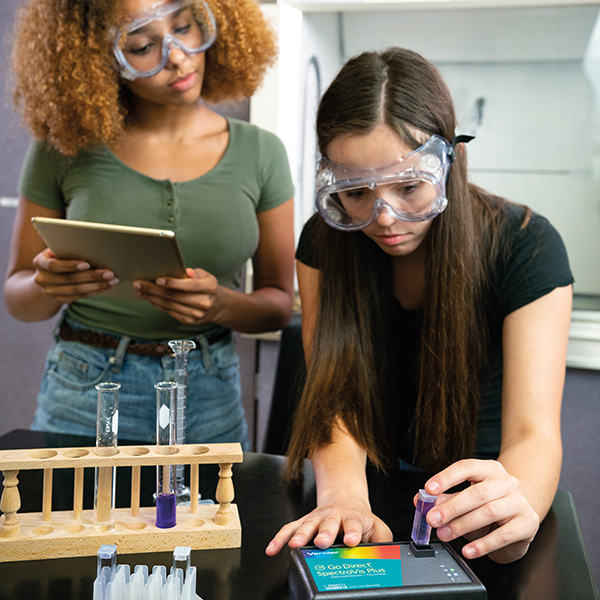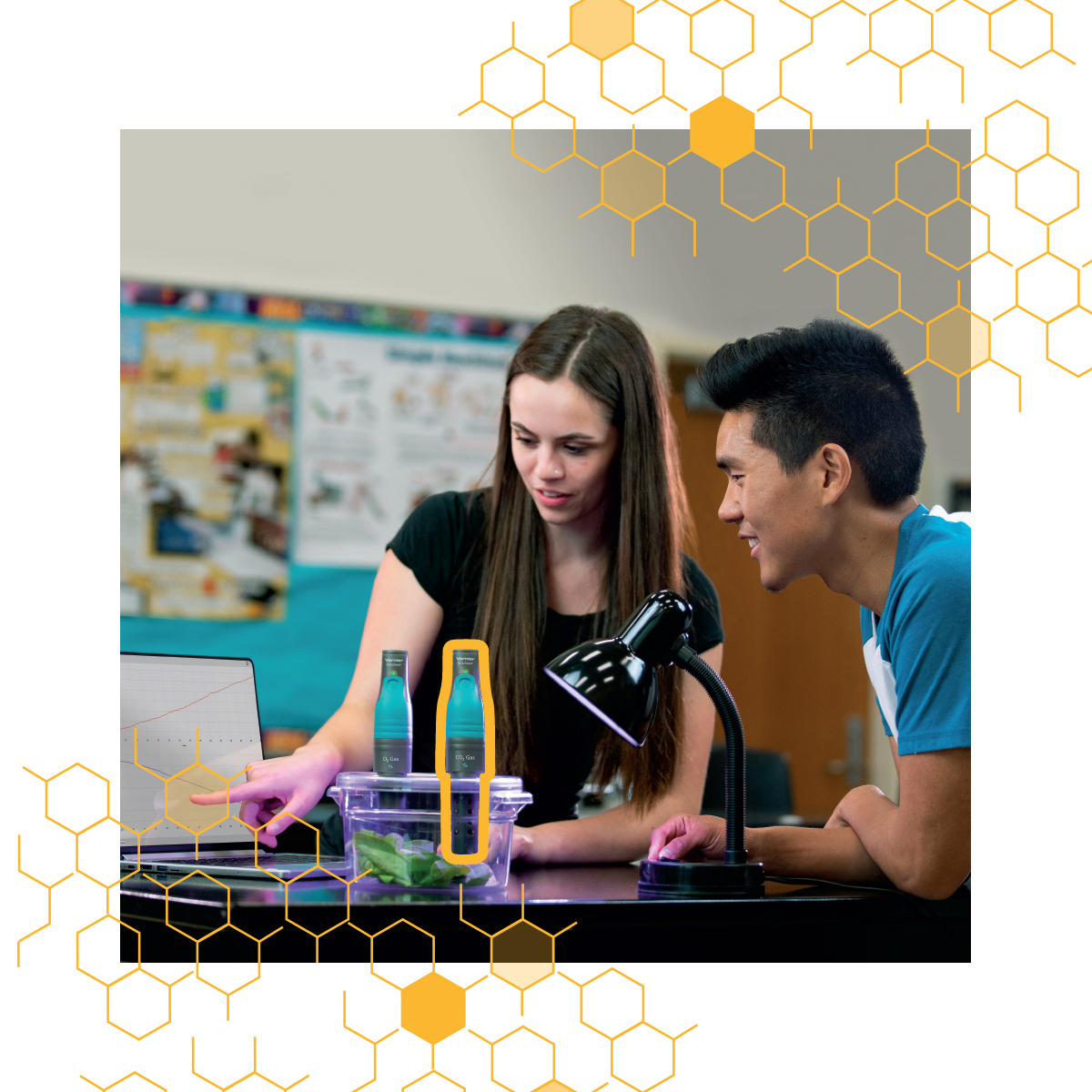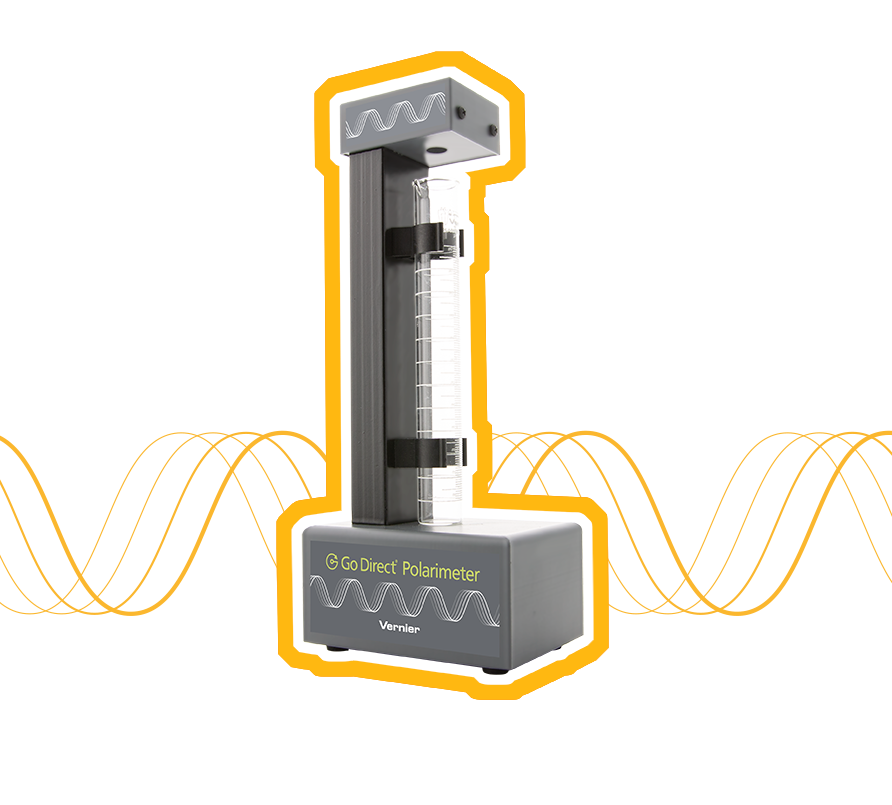Savor the Science:
Inspire Your Students with Food Chemistry Experiments!
Looking for a fun way to engage your students in core chemistry fundamentals? Students are more likely to authentically engage with science when they see chemistry concepts applied to the real world. Food chemistry does just that by inviting students to examine the snacks, drinks, and pantry items that they consume on a regular basis through the lens of inquiry!
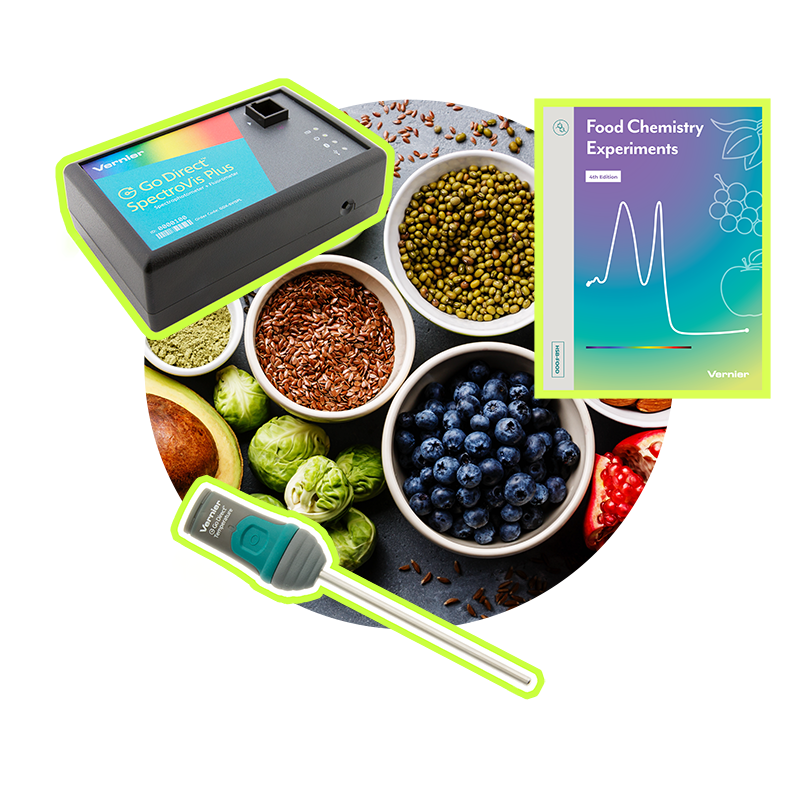
Introduce Your Students to Spectroscopy
Easily collect a full wavelength spectrum (absorbance, percent transmittance, or intensity) in less than one second.
Capable of connecting wirelessly or by USB, the Go Direct® SpectroVis® Plus Spectrophotometer can easily collect a full wavelength spectrum (absorbance, percent transmittance, or intensity) in less than one second. Once the peak wavelength is determined, you can establish the concentration of a solution (Beer’s law) or monitor rates of reactions. A low light path allows this device to be used for microscale labs and biochemistry applications with micro and semi-micro cuvettes.
GDX-SVISPL $479
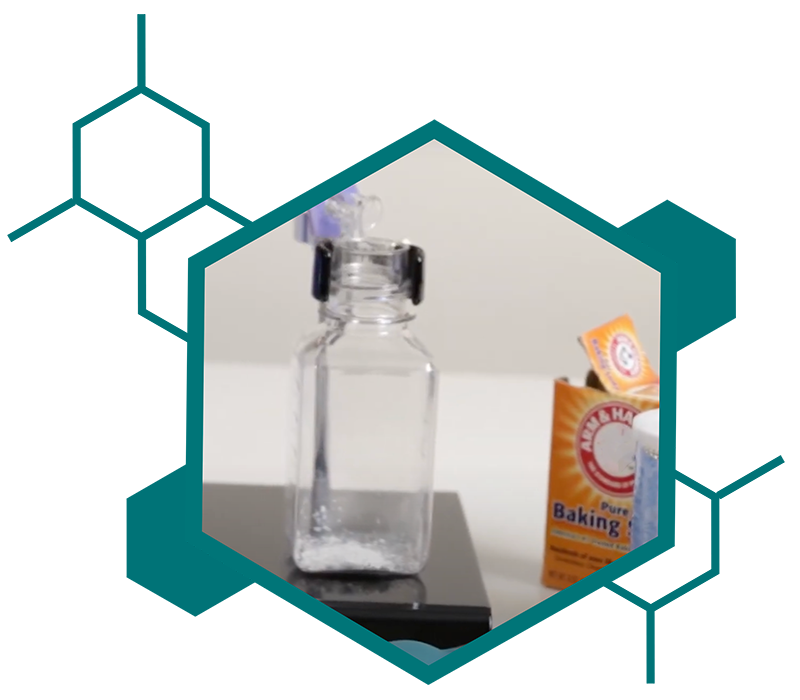
Get Started with a Free Food Chemistry Experiment!
Introduce your students to food chemistry by diving into the science behind baking! Investigate the question “What’s the difference between baking soda and baking powder?” by examining chemicals in different pantry staples, from baking soda to cream of tartar using the Go Direct® pH Sensor and Go Direct CO2 Gas Sensor.
Measure the Energy Content of Foods
The Go Direct Temperature Probe is a rugged, general-purpose sensor that students can use to monitor temperature.
Unlike a traditional thermometer, Go Direct Temperature allows students to collect real-time temperature measurements of a single instance or over a period of time. Its range and wireless capability make Go Direct Temperature the go-to sensor for real-world applications.
GDX-TMP $79
Investigate Household Acids and Bases
Explore pH without the inconvenience of wires, no more spilled solutions, or dangling wires.
The Go Direct pH Sensor is an important and versatile sensor for lab and field activities alike. It gives students the freedom to explore pH without the inconvenience of wires, spilled solutions, or dangling wires. Go Direct pH transmits live readings and captures data in real-time.
GDX-PH $109
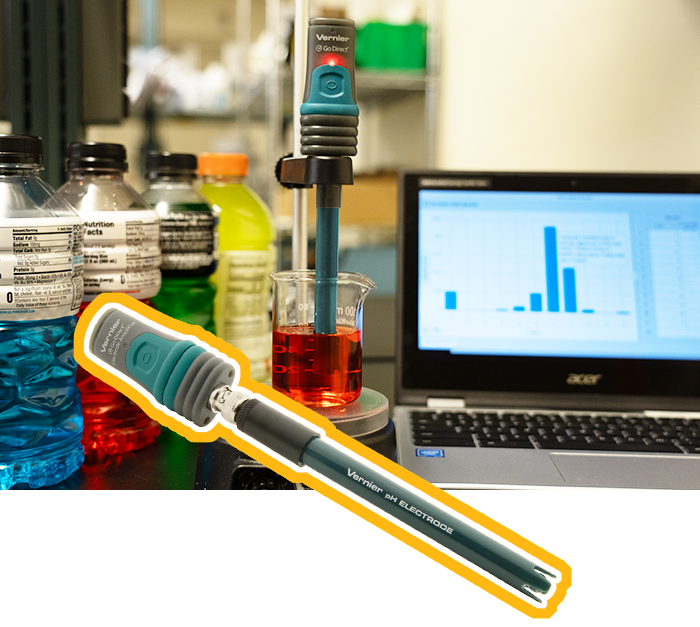
Food chemistry investigations include
Measure CO2 Levels in Beverages and Food Products
Monitor changes in carbon dioxide, temperature, and relative humidity easily with the Go Direct CO2 Gas Sensor.
This sensor includes built-in temperature compensation and humidity protection. A 250 mL Nalgene bottle is included for running controlled experiments with small plants and animals.
GDX-CO2 $229
Visualize the Optical Rotation of Sugars, Amino Acids, and Proteins
Simple-to-use polarimeter and includes free downloadable experiments.
The Go Direct Polarimeter provides a visual representation of chirality by measuring the optical rotation of optical isomers such as sugars, amino acids, and proteins. This Polarimeter is simple to use, includes free, downloadable experiments, and is supported by the free Vernier Instrumental Analysis® app.
Its unique vertical layout and lack of custom glassware make this polarimeter very student friendly. In addition, the analyzer is automatically rotated by an internal motor giving students more time to understand experiments such as the reaction kinetics of HCl and sucrose.
GDX-POL $545
Food Chemistry Experiments includes 14 experiments that use food as a means to explore crucial chemistry concepts.
These experiments use Vernier sensors such as spectrophotometers, temperature probes, and CO2 gas sensors to investigate complex questions involving food. Examine carotenoids in vegetables, analyze iron quantities in cereal, and more!
HSB-FOOD-E $35
HSB-FOOD $45
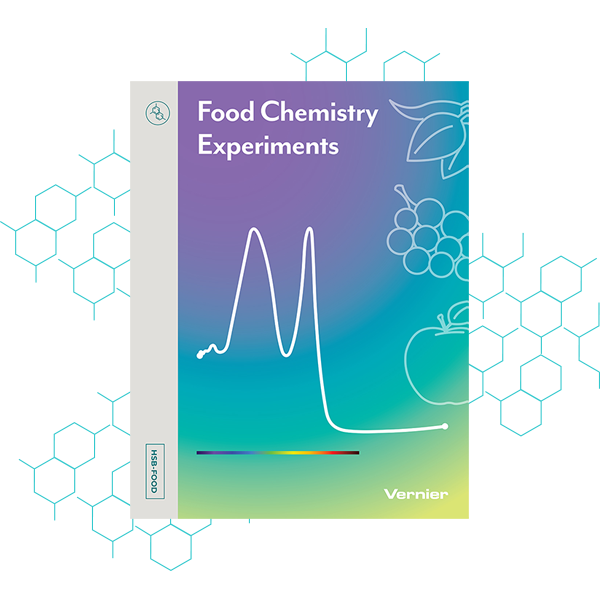
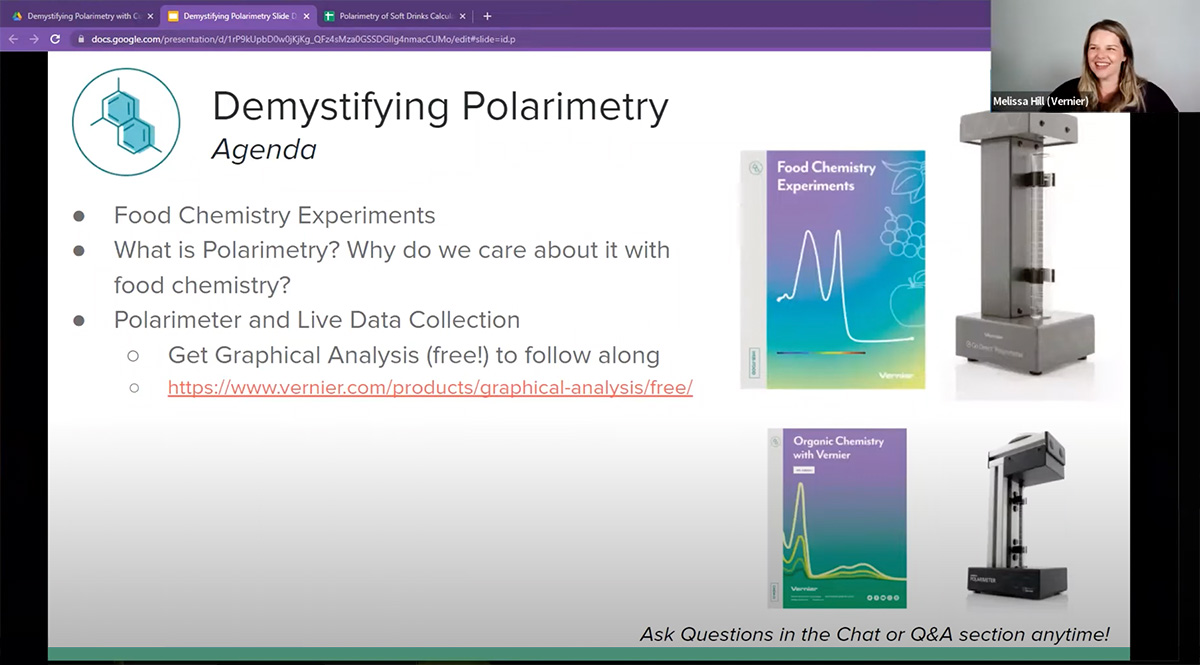
Using polarimetry to teach stereochemistry doesn't have to be a mystery.
In this video, Vernier chemistry experts Dr. Melissa Hill and Nüs Hisim demonstrate how to identify sugars and sweeteners in various beverages using the Go Direct Polarimeter.
We are scientists, educators, and your team.
As you implement data-collection technology into your teaching, we’re here to support you! Looking to learn more about our chemistry products or have questions about ordering? Reach out to our team.

Melissa Hill, PhD
Director of Chemistry
“By adding the Vernier pressure sensors and temperature probes to lessons, suddenly Boyle’s law and Charles’s law came to life! The kids just ate up those labs, and really understood what they were doing.”
Stacey Howell
Davis High School, Layton Utah

